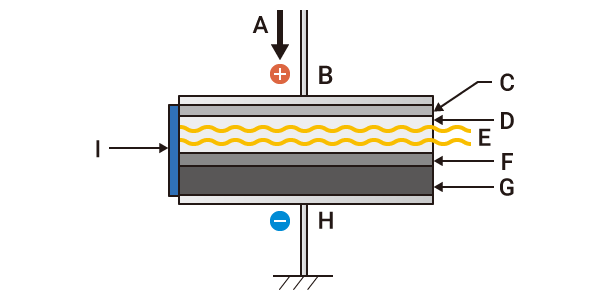Semiconductor (LD) laser welding
Also called laser diode welding, semiconductor (LD) laser welding is a technique that uses a laser beam generated by an electric current passing through a semiconductor as the heat source.
Because the lamp is not used as the excitation source, devices can be compact, and maintenance such as lamp replacement is not necessary.
These advantages have made this technique one that is expected to become widespread in the future.
CO2 lasers and YAG lasers create an oscillated beam by supplying (exciting) the energy required for laser emission to a medium (CO2 gas or YAG). A semiconductor laser, however, creates an oscillated beam as an electric current passes through the semiconductor. The light emission mechanism is the same as a light-emitting diode (LED) with the light being emitted as the current passes in the forward direction of the P-N junction. The high-quality laser beam generated with high conversion efficiency is oscillated for output of a high-energy beam comparable to an electron beam. However, semiconductor laser welding is not without some disadvantages, including strict gap control of welded parts. As such, hybrid welding—a welding method that combines arc welding with superior gap characteristics—has become increasingly popular.
Basic structure of semiconductor laser

- A
- Current
- B
- P electrode
- C
- P-type clad layer
- D
- Active layer (light-emitting layer)
- E
- Laser beam
- F
- N-type clad layer
- G
- N-type PCB
- H
- N electrode
- I
- Total reflective film





